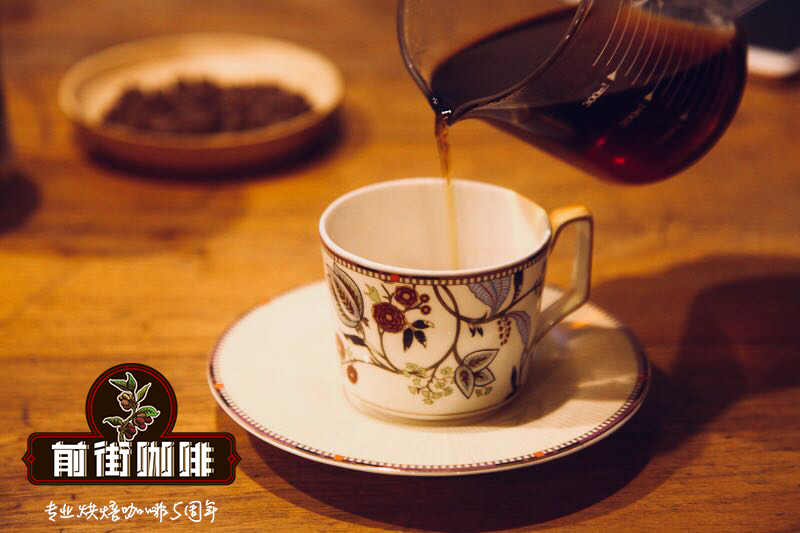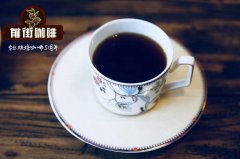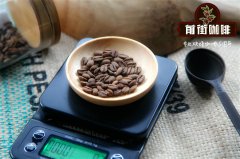Costa Rican Tarazhu Coffee Malio Farm Coffee Bean quality, Flavor and Taste characteristics

Professional coffee knowledge exchange more coffee bean information please follow the coffee workshop (Wechat official account cafe_style)
Costa Rican Tara Pearl producing area | Don Mario Malio Farm Yellow Honey handles Kaddura's flavor?
Costa Rica is the most stable, best and conservative coffee in Central America. From the old iron buckets in the World Cup, we can see that coffee production has a very long history. Coffee was exported to Britain as early as 1800 in the 19th century.
In Costa Rica, the cultivation of Robusta varieties is prohibited by law, and only Arabica varieties are allowed. Honey treatment is the focus of the recent pursuit of coffee people in Taiwan. Honey treatment is caused by poor traffic on Costa Rican mountains and highways. Why do you have to deal with coffee quickly after harvest? if time drags on, coffee beans will cause excessive fermentation damage. After harvest, the farmers in the mountain area remove the peel and pulp and dry them on the elevated shed with the skin, which is the embryonic form of honey treatment.
High-quality Costa Rican coffee is called "extra hard beans". This kind of coffee can grow above 1500 meters above sea level. Altitude has always been a problem for coffee growers. The higher the altitude, the better the coffee beans, not only because the higher altitude can increase the acidity of the coffee beans and thus increase the flavor, but also because the night temperature at the higher altitude is lower, which can make the trees grow slowly, thus making the coffee beans have a stronger flavor. In addition, due to the high altitude drop caused by sufficient rainfall, is also very beneficial to the growth of coffee trees. However, while there are many advantages to growing coffee at higher elevations, the resulting additional transport costs must be taken into account, which is likely to make coffee production unprofitable. The coffee industry in Costa Rica has adopted new technologies to increase efficiency, including the use of "electric eyes" to select beans and identify coffee beans of irregular size.
Located in the south of the country's capital, San Jos é, Tarasu is one of the most valued coffee growers in the country. La Minita Tarrazu coffee is a famous local product, but its production is limited, about 72600 kilograms a year. It is grown on a piece of land called La Minita, which is owned by the last three generations of the McAlpine family in the UK. In fact, this land can produce more than 450 tons of coffee a year. But Tarasu Latin America coffee is grown without artificial fertilizers or insecticides, and its harvesting and selection are done by hand, in order to avoid some damage to coffee beans caused by air spray selection.
Other coffees worth mentioning are Juan Vinas,PR, H.Tournon, Windmill,SHB, Monte bello and Ssnta Rosa. Fine coffee is generally grown in Geredia and the central canyon. Another striking type of coffee is Sarchi (one of the five towns that represent Costa Rica's Coffee Road), which grows on the slopes of the Poas Volcano volcano, 53km from San Jose. Saatchi, founded in 1949, has a land area of 30770 hectares and grows sugar cane and coffee. This area is also famous for its handicrafts, attracting tourists from all over the world.
The country's coffee industry, originally controlled by the Costa Rican coffee industry company Instituto del Caf é de Costa Rica (ICAFE), has been taken over by the official Coffee Committee (Oficina del Caf é). Among the exported coffee, those products that are considered to be of substandard quality are colored with blue vegetable dyes and then transferred back to China for sale. Coffee consumed domestically (dyed blue or undyed) accounts for about 10% of total production, and local per capita coffee consumption is twice that of Italy or the United States.
Yellow honey treatment is newly defined, which means drying coffee beans on an elevated shed and turning it every hour, which is called yellow honey treatment, which comes from the idea of the Emerald Manor in Panama.
Honey handling beans: after harvesting coffee, remove the peel and pulp and leave the coffee beans and epidermis, then send them to the bean drying farm for drying until the moisture content reaches 16%, then send them to the dryer to dry to achieve a uniform moisture content. Rub the film on the skin with sheepskin or parchment before shipment.
Tarazhu Property Characteristics, Costa Rica: farm characteristics
Farm Farm name: Don Mario
Region producing area: Tarraz ú Tarazu
Country country: Costa Rica
Altitude altitude: 1350 Murray 1500
Annual Precipitation annual rainfall: 2500 Murray 2700haomi mm
Soil soil: Volcanic clay volcanic clay
Type of Shade Trees shading species: 36 shading species
Coffee Characteristics: coffee characteristics
Variety variety: Kaddura
Processing System treatment: Yellow Honey yellow honey treatment
Appearance appearance: 17muri 18 eyes
Overall comments on the cup test of Tara beads in Costa Rica
Shallow baking: with the dry fragrance of vanilla, the sweet smell of ice cream and the acid value of oranges.
Medium baking: honey brown sugar is very sweet, suitable for people who have just drunk black coffee.
Qianjie recommended cooking:
Filter cup: Hario V60
Water temperature: 90 degrees
Degree of grinding: small Fuji 3.5
Costa Rican Tara beads flushing and cooking method: the ratio of water to powder is 1:15, 15g powder, the first injection of 25g water, 25s steaming, the second injection to 120g water cut off, waiting for the powder bed water to half, then water injection, slow water injection until 225g water, extraction time about 2:00
Analysis: using three-stage brewing to clarify the flavor of the front, middle and back of the coffee. Because V60 has many ribs and the drainage speed is fast, it can prolong the extraction time when the water is cut off.
Important Notice :
前街咖啡 FrontStreet Coffee has moved to new addredd:
FrontStreet Coffee Address: 315,Donghua East Road,GuangZhou
Tel:020 38364473
- Prev

How much is the taste and flavor of Papua New Guinea Camel coffee beans? how much is it per cup?
Professional coffee knowledge exchange more coffee bean information please follow the coffee workshop (Wechat official account cafe_style) Papua New Guniea Papua New Guinea Manor Camel Farm this is a low-key island country, located in the eastern part of New Guinea Island Papua New Guinea is the world's third largest island country, coffee is an important crop on the island, distributed in the alpine areas of the small rules
- Next

How to deal with coffee beans and brand price in Duli Alba Manor, Costa Rica
Professional coffee knowledge exchange more coffee bean information please follow the coffee workshop (Wechat official account cafe_style) high-quality Costa Rican coffee is called extra hard beans, this kind of coffee can grow above 1500 meters above sea level. Altitude has always been a problem for coffee growers. The higher the altitude, the better the coffee beans, not only because higher altitude can increase the acidity of coffee beans.
Related
- Detailed explanation of Jadeite planting Land in Panamanian Jadeite Manor introduction to the grading system of Jadeite competitive bidding, Red bid, Green bid and Rose Summer
- Story of Coffee planting in Brenka region of Costa Rica Stonehenge Manor anaerobic heavy honey treatment of flavor mouth
- What's on the barrel of Blue Mountain Coffee beans?
- Can American coffee also pull flowers? How to use hot American style to pull out a good-looking pattern?
- Can you make a cold extract with coffee beans? What is the right proportion for cold-extracted coffee formula?
- Indonesian PWN Gold Mandrine Coffee Origin Features Flavor How to Chong? Mandolin coffee is American.
- A brief introduction to the flavor characteristics of Brazilian yellow bourbon coffee beans
- What is the effect of different water quality on the flavor of cold-extracted coffee? What kind of water is best for brewing coffee?
- Why do you think of Rose Summer whenever you mention Panamanian coffee?
- Introduction to the characteristics of authentic blue mountain coffee bean producing areas? What is the CIB Coffee Authority in Jamaica?

